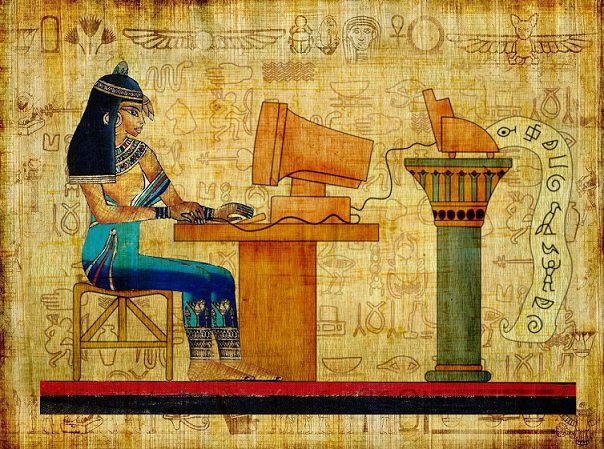Unveiling Intriguing Ancient & Medieval Tech: Inspiring Technological Marvels
Throughout history, humans have exhibited remarkable ingenuity when it comes to technological advancements. From ancient civilizations to the medieval era, our ancestors developed innovative devices and mechanisms that still fascinate us today. Unveiling these intriguing ancient and medieval technologies not only provides a glimpse into the past, but also serves as a reminder of humanity’s ability to create and innovate. In this article, we will explore some of the most revolutionary ancient innovations, unravel the mysteries of enigmatic medieval devices, rediscover forgotten marvels, and draw lessons from the ingenuity of our ancestors.

Ancient Innovations: Revolutionizing Technology in the Past
- The Water Clock: Dating back to ancient Egypt, water clocks were among the earliest timekeeping devices. These remarkable inventions used the flow of water to measure time, allowing for more accurate scheduling and planning.
- The Antikythera Mechanism: Discovered in a shipwreck off the coast of Greece, the Antikythera Mechanism is a complex analog computer believed to have been used for astronomical calculations. This remarkable device, dating back to the 2nd century BCE, showcases the ancient Greeks’ advanced understanding of mechanics and astronomy.
- The Roman Aqueducts: A marvel of engineering, the Roman aqueducts provided a reliable water supply to cities and towns throughout the Roman Empire. These impressive structures showcased the Romans’ mastery of hydraulic engineering and were crucial for the growth and development of their civilization.
- The Chinese Compass: Invented during the Han Dynasty in China, the compass revolutionized navigation by allowing sailors to determine their direction accurately. It was a pivotal technological innovation that greatly expanded maritime exploration and trade routes.
Mysterious Mechanisms: Unraveling Enigmatic Medieval Devices
- The Astrolabe: Widely used during the medieval period, the astrolabe was a sophisticated instrument used for astronomical measurements and determining the position of celestial bodies. It played a crucial role in navigation, mapmaking, and timekeeping.
- The Trebuchet: A formidable war machine, the trebuchet was a medieval siege weapon capable of launching heavy projectiles over long distances. Its innovative design utilized a counterweight system, making it a highly effective weapon during battles and sieges.
- The Byzantine Greek Fire: The Byzantine Empire developed a mysterious incendiary weapon known as Greek Fire. Its exact composition is still unknown, but this medieval flamethrower-like device was highly effective in naval warfare and played a significant role in the empire’s military successes.
- The Mechanical Clock: During the Middle Ages, mechanical clocks began to appear in European monasteries and public spaces. These intricate timekeeping devices marked a significant advancement in horology and paved the way for future developments in precision timekeeping.
Forgotten Marvels: Rediscovering Ancient Technological Wonders
- The Baghdad Battery: Discovered in Iraq, the Baghdad Battery is an ancient artifact consisting of a clay jar, an iron rod, and a copper cylinder. Believed to date back to Parthian or Sassanian times (250 BCE to 640 CE), it has led to speculation that it was used as a primitive battery.
- The Roman Concrete: The Romans developed a remarkably durable and long-lasting concrete recipe that still confounds modern engineers. Their secret lay in using volcanic ash, which greatly enhanced the strength and longevity of their structures.
- The Hanging Gardens of Babylon: Although their existence is debated among historians, the Hanging Gardens of Babylon, if real, would have been an engineering marvel. These tiered gardens, irrigated using an intricate hydraulic system, showcased the advanced engineering skills of the ancient Babylonians.
- The Greek Fire Temple: In ancient Persia, the construction of fire temples showcased the mastery of ancient engineers. These temples were designed to keep an eternal flame burning and played a crucial role in Zoroastrian religious practices.
Inspiring Ingenuity: Lessons from Ancient & Medieval Tech
- Innovation with Limited Resources: Ancient and medieval civilizations achieved remarkable feats of engineering and technology despite having limited resources compared to modern standards. Their ability to innovate and create solutions inspires us to think creatively and find alternatives.
- Cross-cultural Exchange: Many of the technological marvels developed during ancient and medieval times were a result of cross-cultural exchanges and borrowing of ideas. This highlights the importance of open-mindedness and collaboration in driving technological advancements.
- Long-lasting Legacy: The technologies developed by our ancestors continue to inspire and impact our lives today. They serve as a reminder that innovation is a cumulative process and that our modern advancements build upon the foundations laid by those who came before us.
- Honoring Traditional Knowledge: Unveiling ancient and medieval technologies reminds us of the significance of traditional knowledge and the importance of preserving and valuing our cultural heritage. By understanding and appreciating the achievements of our ancestors, we can better shape our future.
Unveiling the intriguing ancient and medieval technologies reveals the extraordinary capabilities of our ancestors. From revolutionizing timekeeping to engineering marvels, these technological marvels continue to captivate and inspire us. By exploring these past achievements, we gain valuable insights into our own potential for innovation and the power of human ingenuity. As we move forward, it is essential to honor and learn from these ancient and medieval tech wonders, appreciating the lessons they offer for our own technological advancements.

